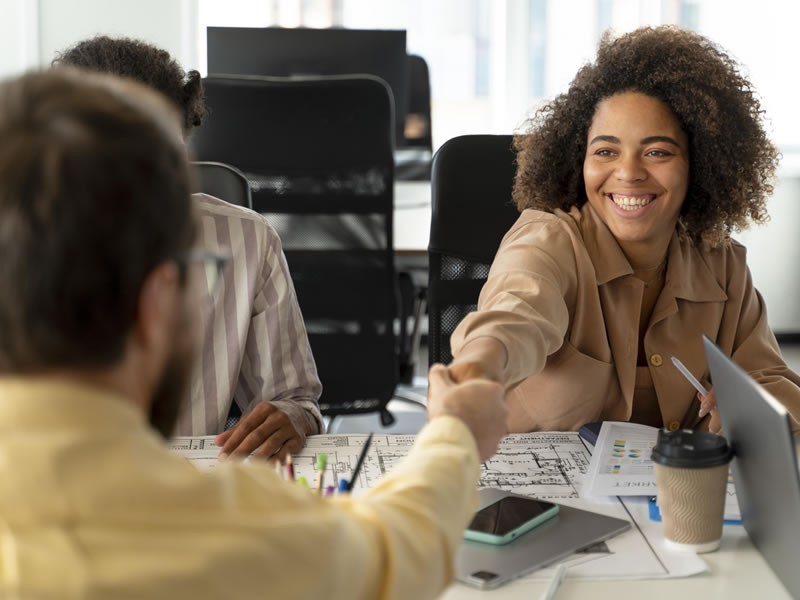Insight Blog
Agility’s perspectives on transforming the employee's experience throughout remote transformation using connected enterprise tools.
11 minutes reading time
(2250 words)
Need-Want Satisfaction Chain & Theory – A Complete Guide
Managers are in charge of creating a performance-friendly workplace. Self-motivation, on the other hand, is the responsibility of the individual.
Human motivations are driven by wants, whether they are sensed knowingly or unconsciously.
The physiological demands for basic necessaries like shelter and food items (i.e., meat, vegetables), water, sleep, and air are examples of
"fundamental needs." More importantly, there are some other needs, including self-esteem, social status, how others identify you, love and affection, ability to give to others, ability to get achievements and accomplishments, and self-assertion can be considered as secondary needs. As you would expect, the degree of these demands varies from person to person and with time.
Inspiration and motivation is a broad phrase that encompasses a wide range of factors such as wants, needs, wishes, and other comparable influences.
To argue that team and organization managers stimulate their subordinates is to state that they take various actions in order to satisfy these drives and wants and compel their subordinates to perform in the way they want.
Need Want Satisfaction Chain
Managers are in charge of creating a performance-friendly workplace. Self-motivation, on the other hand, is the responsibility of the individual.
It's thus conceivable to think about motivation as a chain reaction. Felt needs to lead to wishes or objectives desired, which lead to tensions (unfulfilled desires), which lead to activities aimed at accomplishing goals, and eventually, fulfillment.
There are many elements in need want satisfaction chain starting from individual "needs" that give birth to wants. The "wants" can cause tension and compel people to take "action." The action can result in "satisfaction."
Need Want Satisfaction Theory
One of management's most critical and difficult responsibilities has been employee motivation. The psychological factors that result in voluntary acts aiming at some goal are referred to as motivation.
Managers utilize a variety of ways to keep their staff motivated and pleased since motivation may be extremely customized.
As a result, managers must be aware of the psychological processes. Motivation is dependent on psychological processes, and it is important if you want to successfully steer personnel toward set objectives.
Most of the needs theories are founded on the idea that individuals are driven by unmet needs and aim to find internal causes that influence their conduct.
For instance, assume that you are 40 years old and still living in your parents' basement; you may look for your own place. You will be able to satisfy your demand for privacy and freedom.
Needs are psychological or physiological inadequacies that elicit a behavioral response. A person's requirements might range from mild to powerful, and they can change depending on the environment, time, and location.
Want Satisfaction Chain Examples
The explanation behind the chain is complicated. First and foremost, wants are not independent of a person's surroundings, with the exception of physiological demands such as food.
Environmental variables, on the other hand, promote several physiological requirements.
- The scent of food may make you hungry, a lower thermometer reading can make you feel cold, and the sight of a cold drink might make you thirsty. Our view of secondary requirements is heavily influenced by our surroundings. A colleague's elevation may pique one's interest in a better job.
- A difficult challenge might pique someone's interest in completing a task by solving it. A pleasant social group may strengthen one's desire for connection, and, of course, being alone more than one wishes to provide a powerful reason to seek out others.
- More importantly, the need-want-satisfaction connection is not always as straightforward as it appears. Behavior can be caused by a need, but it can also be caused by a need. It's possible that satisfying one needs will lead to a desire to satisfy others.
The satisfaction derived from reaching a desire or objectives, for example, may pique a person's drive for success, whereas failure may dull it. The one-way character of the chain has also been called into question by the findings of certain biological scientists, who discovered that human behavior isn't necessarily caused by wants but may sometimes be caused by them. To put it another way, conduct refers to what individuals do rather than why they do it.
From the perspective of management, a worker may have great job satisfaction, but the low motivation for the job or the opposite may be true.
Understandably, a highly driven employee who is dissatisfied with their current position is likely to hunt for another employment. Similarly, persons who find their employment satisfying but are paid insufficiently less than they wish or believe they deserve are likely to look for other occupations.
Satisfaction is the feeling of fulfillment that occurs when a desire is met. In other words, motivation is a desire to achieve a goal, while satisfaction is the result that has already been achieved.
Need Want and Desire
The marketing industry thrives because of the never-ending cycle of needs, wants, and desires.
Human wants, needs, and desires are limitless. We may be able to fulfill some of our desires, but other desires emerge quickly.
Marketers will never be able to provide goods and services that will fulfill everyone's needs. As a result, scarcity explains the link between finite resources and boundless desires, as well as the resulting dilemma.
The most important marketing reality is that individuals are more concerned with themselves than with corporations.
People are bursting at the seams with wants, needs, and desires, and they purchase items only to fulfill those feelings. Customers are only interested in things when they have a specific demand that must be met. Marketers must be aware of this reality.
Needs
"Needs" refers to basic human needs such as housing, clothing, food, and water, all of which are necessary for human survival.
Other requirements include education, healthcare, and even a social aspect, such as belonging to a certain civilization or self-expression. The things that belong within the necessities category of products, on the other hand, do not require a push. Instead, the buyer purchases it on their own.
However, this is not the case.
Even the "needs category product" must be pushed in the minds of consumers in today's market when hundreds of businesses compete in the same categories with identical offers meeting the same requirements.
Want
"Wants" are a result of "needs." Wants aren't required for human survival, but they are linked to needs.
Simply put, a wish is a thing that a client desires but is not necessary for our survival.
As a result, want is the polar opposite of need, which is necessary for our survival.
Wants aren't permanent, and they alter on a regular basis. People and places change with time, and as a result, people's wants change as well.
Desires
Wants can give birth to desires. When someone is willing and able to buy something that he or she wants or needs, it is called demand. Desire is the fundamental distinction between desires and demands. A consumer may want something, but he or she may not be able to get it.
As a result, those who can buy a coveted product are turning their desires into demands. In other words, if a consumer is willing and able to purchase a need or a want, it indicates that the need or desire is in high demand.
For a car, you could want a BMW, and for a phone, you might want an iPhone. Is it, however, possible to buy a Mercedes or a Jaguar? You can if you have the financial means to do so.
Luxurious automobiles, five-star hotels, the latest gaming consoles, top-notch cameras, and so forth are examples of demands.
Maslow Higher Order Needs
Maslow's higher-order needs include the desire to become what you're capable of or have the potential to become. It encompasses the desire for personal development as well as self-satisfaction.
It also involves a drive to learn more, to help others, to be creative, and to be artistic. The urge for self-actualization is never entirely satisfied. As a person's psychological development progresses, new chances for growth emerge.
Individuals are driven by unmet wants, as described by Maslow. As each of these requirements is met to a substantial degree, the following need is compelled to develop.
According to Maslow, the lower-order demands include physiological and safety requirements. Externally, these lower-order demands are mostly met.
The higher-order wants were defined as social, esteem, and self-actualization. These higher-order wants are usually met internally, that is, within a person. Consequently, we can say that the lower-order requirements of employees are largely addressed during the boom time.
What is Maslow's Hierarchy of Needs?
Maslow's Hierarchy of Needs is one of the most widely recognized theories in psychology, designed to explain what drives human motivation and behavior.
First introduced by Abraham Maslow in 1943, the model suggests that people are motivated by a series of hierarchical needs — from basic survival to personal growth and self-fulfillment.
At its core, Maslow's hierarchy of needs theory proposes that human requirements are structured in a five-level pyramid, often referred to as the Maslow's hierarchy of needs pyramid.
At the base are the most fundamental, physiological needs such as food, water, and shelter — the essentials for survival. Once these are met, individuals naturally seek to fulfill higher-level psychological and emotional needs.
Maslow explained that lower-level needs must be satisfied before higher-level needs can emerge as motivators.
For example, someone struggling to meet their basic need for safety will be less focused on achieving recognition or personal growth. As one moves up the hierarchy, the needs become increasingly complex, abstract, and long-term.
The Five Levels of Maslow's Hierarchy of Needs Explained
Why Maslow's Theory Still Matters
Maslow's hierarchy of needs theory remains highly relevant today — in education, business, healthcare, and even modern workplace design. For example, companies often apply Maslow's hierarchy of needs examples to improve employee engagement:
- Ensuring fair pay and job security (physiological and safety needs)
- Encouraging teamwork and inclusion (belonging needs)
- Recognizing achievements and promoting growth opportunities (esteem and self-actualization needs)
The higher you climb the pyramid, the harder it becomes to meet those needs due to psychological, interpersonal, and environmental barriers. Yet, the pursuit of these needs — particularly self-actualization — is what drives progress and innovation.
If you're studying psychology or leadership, you can download a Maslow's hierarchy of needs PDF to visualize the full structure of the pyramid and explore practical applications across different contexts.
FAQ
Explain the Need–Want Satisfaction Chain using real-life marketing examples.
Use this prompt to generate clear, practical need satisfaction examples that connect consumer psychology with buying behavior. The AI can explain how unmet needs turn into wants, and how brands position products to satisfy them.
Analyze how Maslow's Hierarchy of Needs influences the Need–Want Satisfaction Theory in modern consumer behavior.
This prompt helps explore how Maslow's framework complements the need–want satisfaction theory — showing how physiological and emotional needs shape wants and purchasing decisions. Perfect for business, HR, or academic writing.
Generate a visual flow or infographic explaining the stages of the Need–Want Satisfaction Chain.
Use this to ask AI to design a step-by-step visual model showing how needs are recognized, transformed into wants, and ultimately satisfied through behavior or consumption. Ideal for blog posts, e-learning content, or presentations.
Create a case study showing how unmet needs lead to innovation and product development
This prompt encourages AI to produce case-based analysis that links innovation to unmet consumer needs — illustrating how identifying and satisfying wants drives market success.
Summarize the Need–Want Satisfaction Theory and its relationship with human motivation and goal setting.
This prompt is perfect for educational or leadership contexts. It helps AI explain the link between needs, desires, and achievement, offering insights into why people pursue certain goals or make specific choices
Conclusion
Finally, keep in mind that need theories are always at work in the background while you strive to make your workplace productive. It isn't something that goes away once you've addressed the demands of your staff.
When you're trying to fulfill goals at work, for example, your workers will assess how well your goals correspond with their requirements. If you aim for a result that satisfies a primary need that your employees have, they will perceive it as undesirable and reject working with you.
As a result, figuring out how to adapt Maslow's needs theory to the workplace is a never-ending task. Avoid falling into the managerial trap of fixing it and forgetting it.
Categories
Blog
(2618)
Business Management
(323)
Employee Engagement
(212)
Digital Transformation
(175)
Growth
(119)
Intranets
(115)
Remote Work
(61)
Sales
(48)
Collaboration
(36)
Project management
(29)
Culture
(28)
Customer Experience
(26)
Knowledge Management
(21)
Leadership
(20)
Comparisons
(6)
News
(1)
Ready to learn more? 👍
One platform to optimize, manage and track all of your teams. Your new digital workplace is a click away. 🚀
Free for 14 days, no credit card required.












![What Is an Intranet for Business? [2026 Guide] What Is an Intranet for Business? [2026 Guide]](http://agilityportal.io/images/easyblog_articles/1496/b2ap3_thumbnail_What-Is-an-Intranet-for-Business.png)




